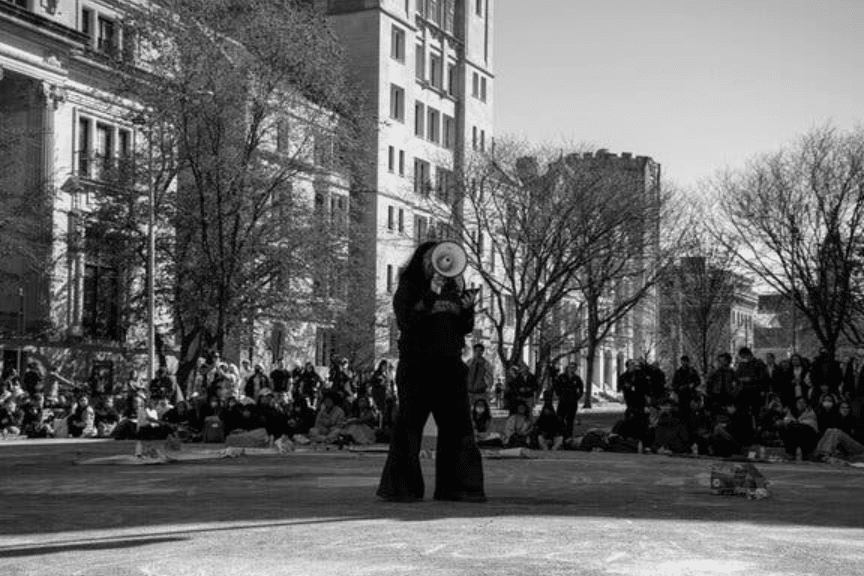Netanel Crispe, from Danby, Vt., is a 21-year-old junior studying American history at Yale. He is also, to his knowledge, the university’s only Hasidic undergraduate. When he chose Yale, he told me this week, he was “looking for an institution that asserted its position in terms of maintaining and protecting free expression while not backing down on its principal values.”
It hasn’t worked out that way.
On Saturday evening he and his friend Sahar Tartak, a Yale sophomore and an Orthodox Jew, paid a visit to the university’s Beinecke Plaza, where pro-Palestinian demonstrators had set up an encampment.
“I was wearing my black hat; I was very identifiably Jewish,” Crispe said. “I was yelled at, harassed, pushed and shoved numerous times. Every time I tried to take a step someone confronted me inches from my face, telling me not to move.” Tartak said she was hit in the left eye by a Palestinian flag held by a demonstrator. She ended up in the hospital, luckily without permanent injury. “Thank God, there was a small sphere at the end of the pole,” she told me.
[The New York Times Report continues]
There’s a certain eagerness in some media stories to highlight Jewish students who have joined the protests as a way of acquitting anti-Israel groups of charges of antisemitism. But as Jonathan Chait astutely noted in New York magazine, “this does not settle the question of their relation to antisemitism any more than ‘Blacks for Trump’ puts to rest concerns about Republican racism.”
Others have suggested that some of the more aggressive expressions of antisemitism have come from outside agitators rather than from students themselves. Maybe, though there’s plenty of evidence of atrocious student behavior. But that still leaves open the question of why these students regularly chant slogans like “There is only one solution, intifada revolution,” which (if they didn’t know it before) they know now is an incendiary call to violent action against Jews.
The sad fact of campus life today is that speech and behavior that would be considered scandalous if aimed at other minorities are treated as understandable or even commendable when directed at Jews. The calling card of antisemitism has always been the double standard. How would the Yale administration have reacted if Crispe and Tartak had been Black students who said they were taunted, harassed and assaulted (whatever the ostensible political motive) by a mob of their white peers?
What goes for the student demonstrators is true of faculties, too. At Columbia, nearly 170 professors put their names on a statement suggesting that “one could regard” Oct. 7 as “an occupied people exercising a right to resist violent and illegal occupation.” Leaving aside the lawyerly language, there’s little question as to where the sympathies of the signatories lie. What are Jewish students — including the Israelis enrolled at Columbia — supposed to do when faced with such militant hostility not only from their peers but also from their professors?
I asked Crispe and Tartak if they had given thought to leaving Yale. “I have to stay,” Tartak told me. Crispe felt similarly. “I’m going to stay around Yale to support my peers as long as I need to,” he said. But he also had regrets.
“I entered Yale extremely proud to be one of the first Hasidic Jews to go as an undergraduate,” Crispe said. “I looked forward to sharing experiences with students from diverse backgrounds while living proudly in my own skin. What I find now, walking around campus, is people flipping me off, yelling at me. There’s no escaping it.”
Crispe’s and Tartak’s defiance commends them. As for the student bigots who have put them through these ordeals — and the university administrators who have dallied and equivocated in the face of that bigotry — history will eventually render a verdict. Donors, alumni and prospective students should reach their own verdicts sooner.

